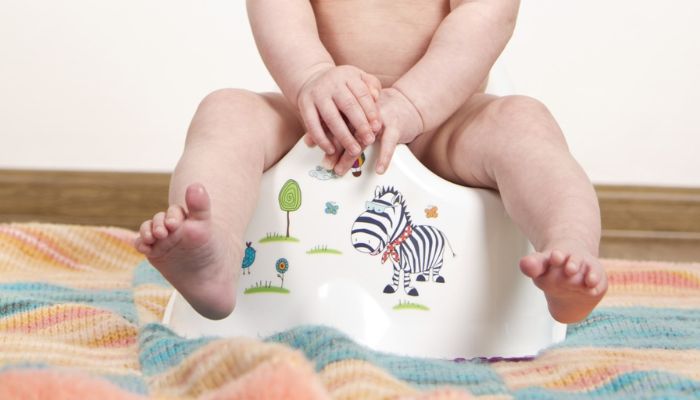
Potty training is a major milestone for toddlers and their parents. While there’s no one-size-fits-all approach, the key to success lies in reading your child’s cues rather than focusing strictly on age. Some children may be ready as early as 18 months, while others may not show signs of readiness until closer to three years old. Here’s how to know when the time is right, what tools can help, and tips to make the process smooth and rewarding.
When Is the Right Time to Start Potty Training?
Instead of setting a specific age, look for these signs that your child is ready to transition out of diapers:
- Awareness of bodily functions: Your child tells you when they’ve peed or pooped in their diaper and want to be changed.
- Dry periods: They can stay dry for several hours at a time or wake up with a dry diaper after naps.
- Interest in the potty: They show curiosity about the toilet or potty chair and might even want to sit on it.
- Ability to follow instructions: They can understand and follow simple directions, like “Let’s go to the potty.”
- Desire for independence: They want to do things themselves and may express frustration with wearing diapers.
Once you see these cues, you can start introducing the idea of potty training in a positive, pressure-free way.
Potty Options to Consider
Choosing the right potty can make a big difference. Here are some highly rated options from Amazon that parents love:
- Standalone Potty Chairs: Perfect for little ones who need a comfortable, toddler-sized seat.
- Potty Seats for Toilets: These fit onto standard toilets, helping kids transition to the real thing. Many come with handles for added stability.
- Portable Travel Potties: Great for on-the-go training or outdoor use.
- Accessories for Bed and Public Toilets: Consider mattress protectors for nighttime training and disposable seat covers for public restrooms to make potty training convenient anywhere.
How to Approach Potty Training
Once your child shows signs of readiness, here’s a step-by-step approach that has worked for many families:
- Ditch the Diaper: Once you decide to start, go diaper-free (or use training underwear) during waking hours. This helps your child feel wetness and understand the connection between the urge to go and using the potty.
- Frequent Potty Reminders: Ask your child every 30 minutes, “Do you need to use the potty?” and take them to sit on it even if they say no. With practice, they’ll start to recognize the urge.
- Use a Potty Training Chart and Rewards: Create or download a potty sticker chart to track their successes. Every time they use the potty, they get to add a sticker to the chart.
- Combining this with reminders can help create a routine. Stickers and small rewards make it fun and exciting for children to participate.
- Celebrate their progress and explain how proud you are of them. They’ll love sharing their success with stuffed animals or family members like dad, which boosts their confidence.
- Examples of Rewards:
- Non-material rewards: Hugs, kisses, dances, baking something together, or watching an episode of their favorite show (like Peppa Pig).
- Material rewards: Small collectible figurines, stickers, small toys, books, or outings like getting ice cream or visiting a game room.
- Go Together: Children love to mimic adults. Try going to the bathroom together—you use the toilet, and your child uses their potty. This shows them how it’s done and normalizes the process. Explaining things like, “Mommy uses the toilet too,” helps them feel included and grown-up.
- Introduce Big Kid Underwear: Let your child pick out special underwear to celebrate this new phase. Explain that wearing underwear means they’re getting bigger and it’s now time to use the potty. This sense of independence and pride can be a big motivator.
- Encourage Learning Through Stories and Songs: Read books about potty training, play potty training songs, or show them age-appropriate TV shows with potty training themes. These can make the experience fun and relatable.
- Books to Try:
- Songs to Play: Search for potty training songs like “It’s Potty Time” by Toodle Kids or fun nursery rhymes with a potty twist on YouTube.
- Shows to Watch: Many kids enjoy episodes like “Daniel Tiger’s Neighborhood” (the potty training episode) or “Elmo’s Potty Time.”
- Start at Home First: Begin by removing the diaper at home. Once your child consistently stays dry during the day without accidents, transition to going diaper-free outside as well. Finally, when your child starts waking up with a dry diaper in the morning, you can remove diapers at night too.
Making It Fun
Turning potty training into a game can make the process enjoyable rather than stressful. Celebrate every success with high fives, cheers, or even a little dance. Children also love filling up their potty charts and earning small rewards, like stickers or bubbles. Positive reinforcements build confidence and excitement about potty training.
What If There Are Setbacks?
Accidents will happen, and that’s okay. Stay patient and avoid punishment or shame. Instead, gently remind your child about using the potty next time. If your child seems resistant or stressed, take a break and try again in a few weeks.
Wrapping Up
Potty training is a journey, and every child moves at their own pace. By paying attention to readiness cues, choosing the right tools, and using methods like a potty training chart or a potty sticker chart, you can make the process smoother and even fun. Reading books, playing potty songs, and celebrating successes with rewards can further encourage your toddler. Remember to celebrate milestones and involve your child in the process. Before you know it, your little one will be diaper-free and proud of their new skill!

